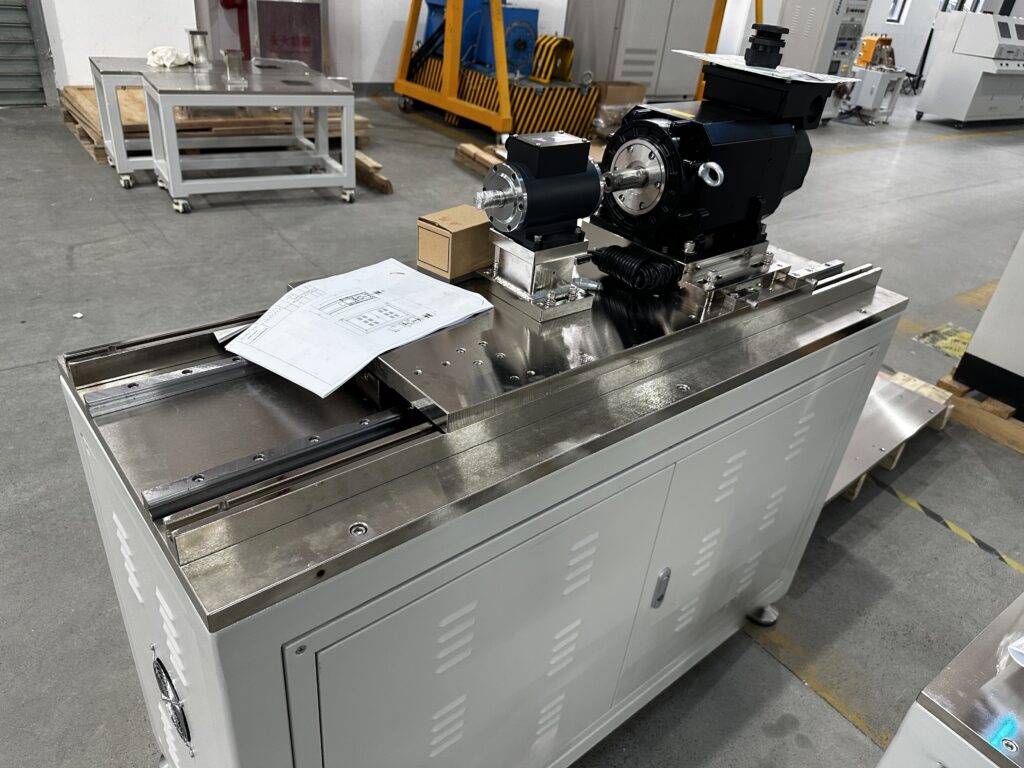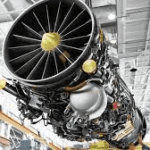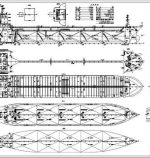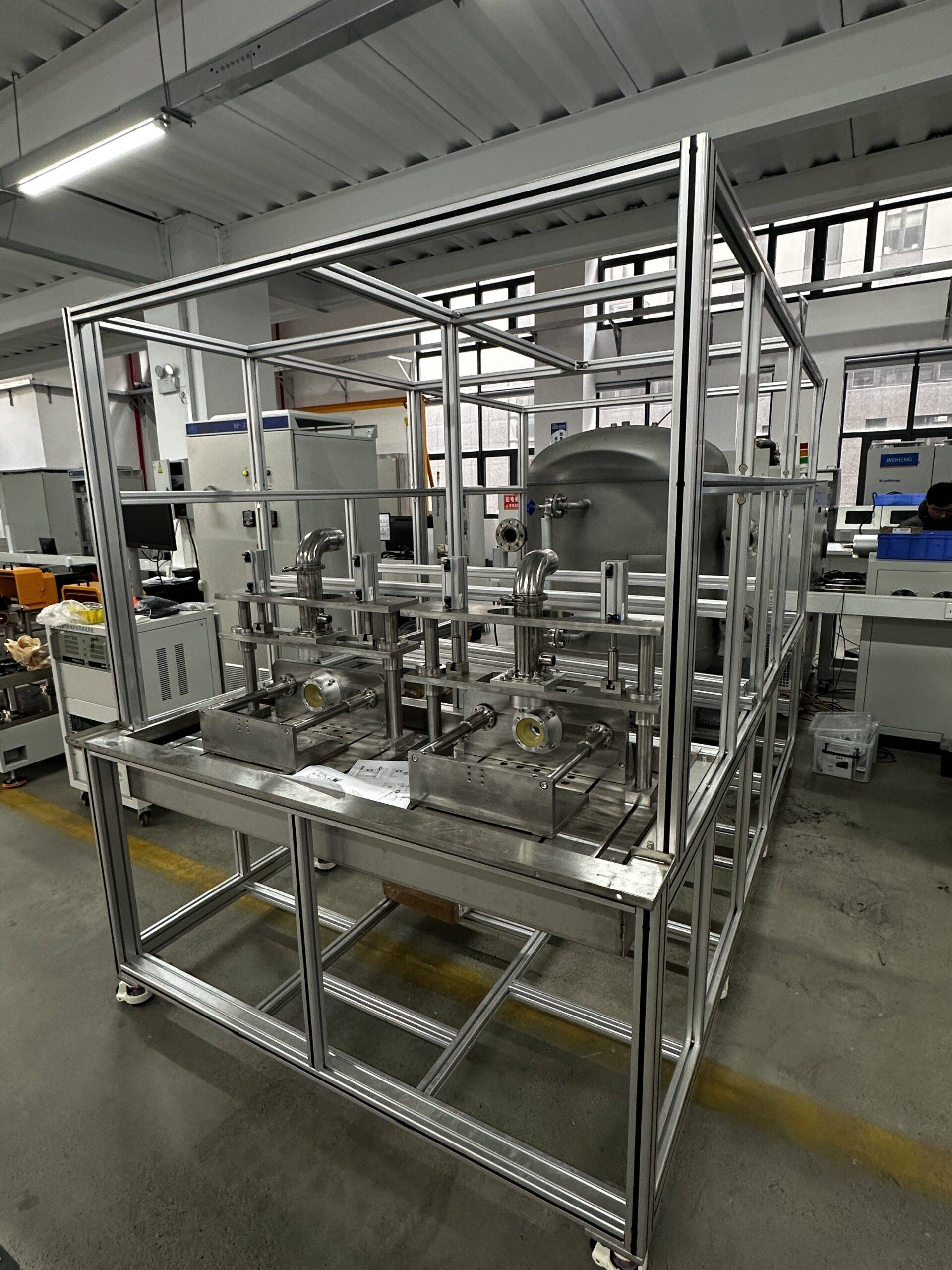Dynamometers Testing solution is a device used to measure torque, power, and rotational speed of an engine, motor, or other rotating machinery. Dynamometers are critical tools used in various industries, including automotive, aerospace, and industrial sectors, to test the performance, efficiency, and reliability of engines, motors, and drivetrains under different load conditions. Whether for R&D, production line testing, or regulatory compliance, a dynamometer provides accurate data that helps manufacturers optimize products for maximum efficiency and safety.
Principles of Dynamometers:

A dynamometers is a device used to apply a load or braking force on the test object, (such as motors, engines, mechanical systems, etc.) to measure its power and performance. The operating principle of a dynamometer usually relies on several methods:
Dynamometers typically classify into the following types:
Eddy-Current Dynamometer
Magnetic Powder Dynamometer
Powder Brake Dynamometer
Hydraulic Dynamometer
Pneumatic Dynamometer
Factors to Consider When Selecting a Dynamometer
Dynamometers cover a wide range of Torque, Speed and Mechanical Power ratings. selecting the appropriate size Dynamometer for your motor testing needs, you will need to determine the Maximum Torque, Speed and Power applied to the Dynamometer:
It is important to consider all torque points that are to be tested, not only rated torque, but also Lock Rotor and Breakdown Torque. Dynamometer selection should initially base on the maximum torque requirement, subject to determining the maximum power requirements.
This rating is to be considered independent of torque and power requirements, and is the maximum speed at which the Dynamometer can be safely run under free run or lightly loaded conditions. It is not to be considered as the maximum speed at which full braking torque can appliy.
These ratings represent the maximum capability of the Dynamometer,Braking System to absorb and dissipate heat generated when applying a braking load to the motor under test. The power absorbed and the heat generated by the Dynamometer is a function of the Torque (T) applied to the motor under test, and the resulting speed (n) of the motor.
Our Brake Dynamometer Testing Systems combine cutting-edge technology with reliable data capture to offer precise results, making them ideal for industries that require detailed performance and durability testing.
Accurate Torque & Power Measurement: Whether testing engines, motors, or components, our dynamometers provide precise readings of torque, power, and rotational speed.
Real-World Testing Conditions: Simulate driving conditions, load profiles, and environmental factors for more realistic data.
Non-Wear Technology: Features like eddy-current braking in dynamometers reduce wear and tear on components, resulting in longer-lasting equipment.
Compliance with Industry Standards: Our systems are fully compliant with EPA, ISO, and WLTP standards, ensuring your product meets global regulatory requirements.
Customizable and Scalable: Tailor the dynamometer to your specific testing needs, with options for electric, hybrid, and traditional vehicle testing, as well as custom testing setups for industrial applications.
Energy Recovery: Reduce testing costs by recovering energy during regenerative braking tests, particularly useful in electric vehicle (EV) testing.
Real-Time Data Logging: Continuous, real-time monitoring and data acquisition allow for immediate analysis and adjustment during tests.
Our dynamometers testing solutions are versatile and can appliy across various industries to test and validate a wide range of systems:
Automotive & Electric Vehicles (EVs)
Performance and efficiency testing for engines, motors, transmissions, and powertrains.
Compliance with emission and fuel economy standards.
Battery testing for electric vehicles to monitor power output, efficiency, and regenerative braking.
Aerospace & Aviation
Testing of propulsion systems and engines for performance, efficiency, and safety.
Durability testing of aerospace components to ensure reliability during extreme conditions.
Industrial & Heavy Machinery
Performance testing of gearboxes, motors, and compressors under heavy loads.
Energy efficiency testing to reduce power consumption and improve operational performance.
Motor & Engine R&D
Analyze engine performance and motor dynamics to improve design and efficiency.
Test for power output, torque, and speed under varying load conditions.
Emissions Testing
Perform emissions testing for vehicles and engines to ensure compliance with local and international environmental standards.
Modular Design: Adaptable to test various vehicle types and components. From single-axle testing to multi-axle and full drivetrain systems, our dynamometers can handle it all.
High Precision & Repeatability: Engineered for high accuracy in measuring torque, power, and speed, our systems ensure reliable data every time.
Variable Load Simulation: Simulate real-world conditions such as accelerations, decelerations, and constant-speed cruising for automotive testing.
Safety Features: Includes features like over-speed protection, automatic shutdown in case of failure, and manual control for emergency situations.
Advanced Software Integration: Integrated software solutions for real-time data logging, visualization, and customizable reporting. Analyze data in an intuitive interface.
Energy Recovery System: Save on energy costs by utilizing regenerative braking for electric vehicle (EV) testing and hybrid powertrains.

We provide the torquemeters, couplings, flywheels, spindles & test rigs for both helicopter and aero engine component testing

We provide test solution for marine engines, propulsion systems, electric motors, generator sets, transmission gearboxes, auxiliary power systems, exhaust gas systems, and spare parts for ships

Water pump testing system is a specialized equipment used for performance testing of water pumps, commonly used to assess key parameters such as flow, head, power, and efficiency.
For any questions or support, please reach out via email at [email protected].
We aim to respond promptly.
Need immediate assistance? Call us at +86 156 1877 0706.
Our team is ready to assist you.
We welcome you to visit our office located at 3F, Building 2, NO.511 Xiaowan Road, Fengxian, Shanghai, China.
Let's discuss your needs in person.

© 2025 Shanghai EconoTechnology Co., Ltd. All rights reserved.
Empowering innovation through reliable testing solutions.